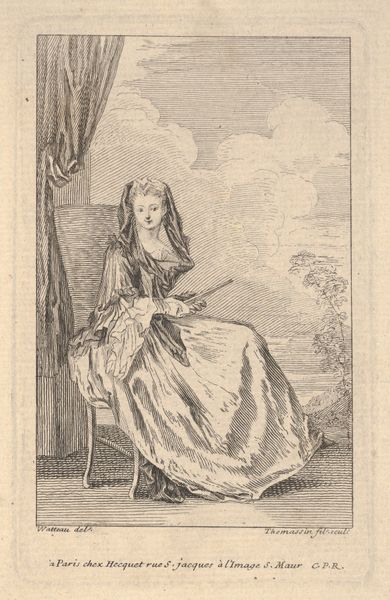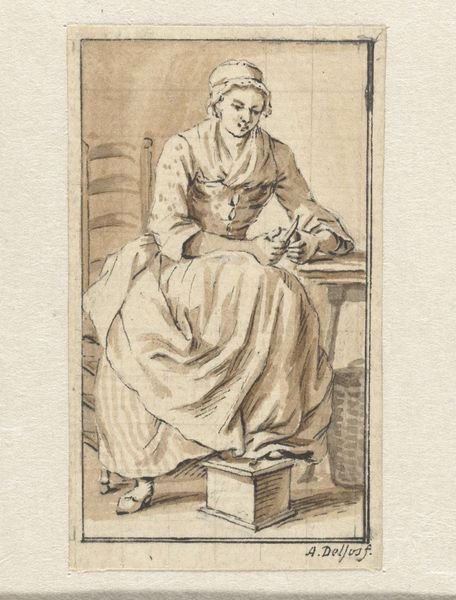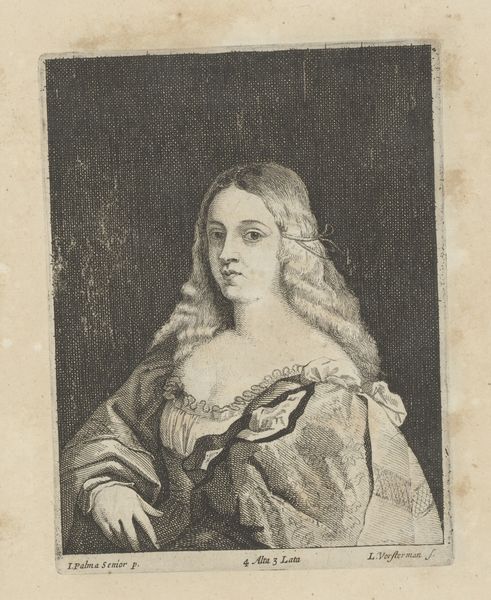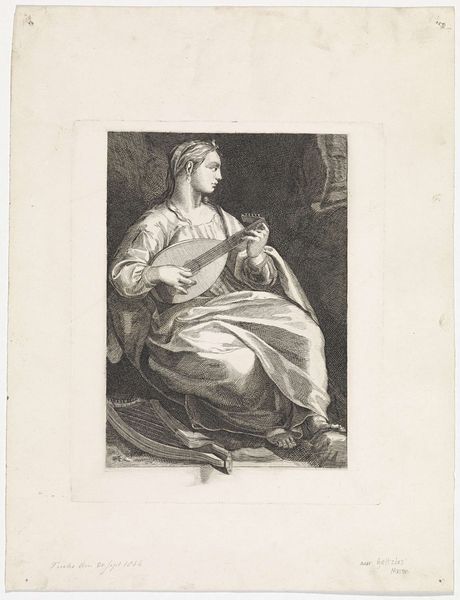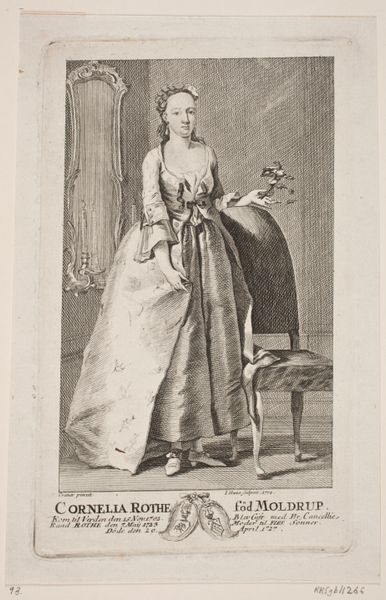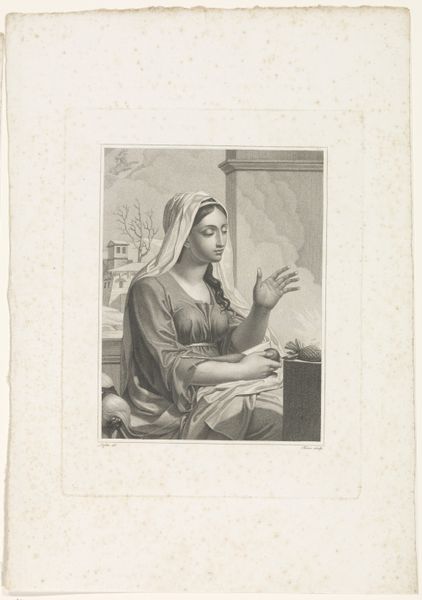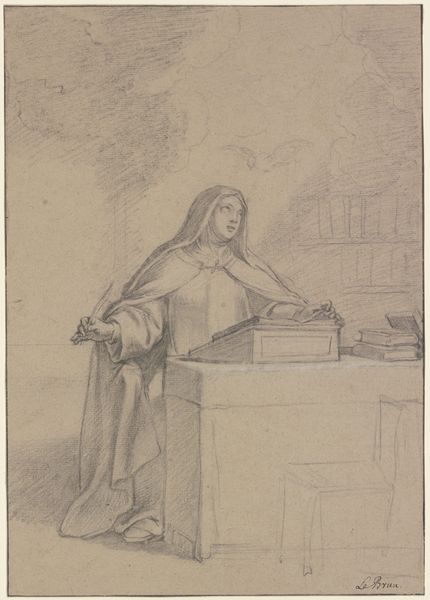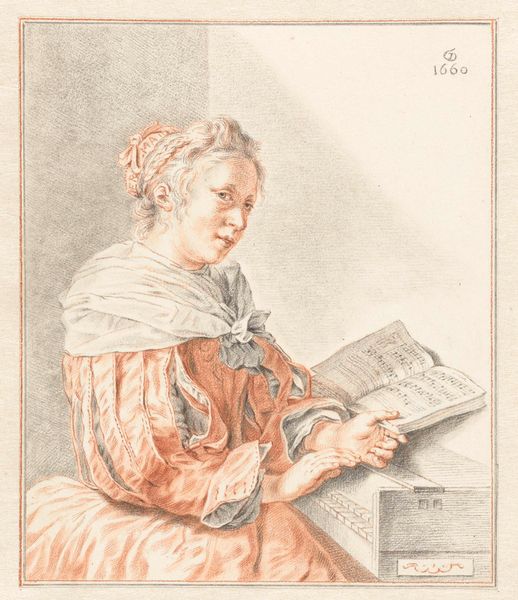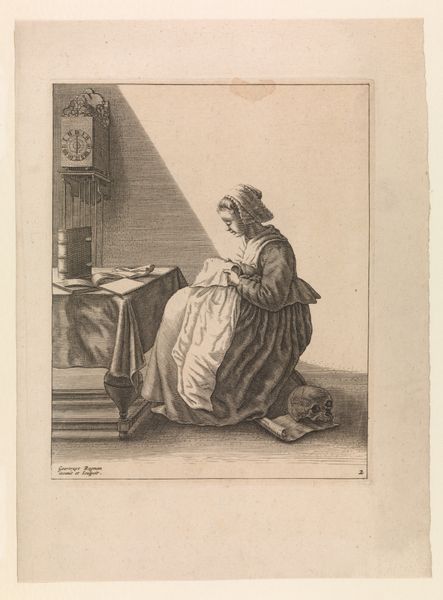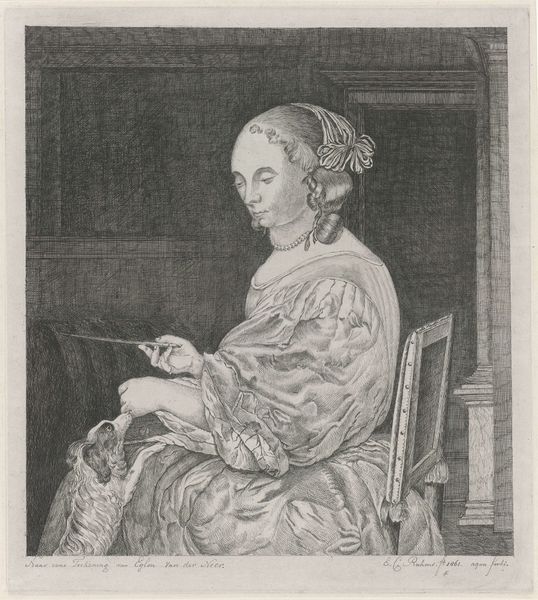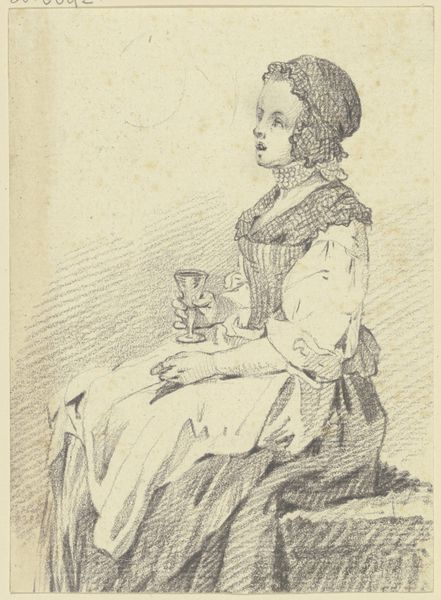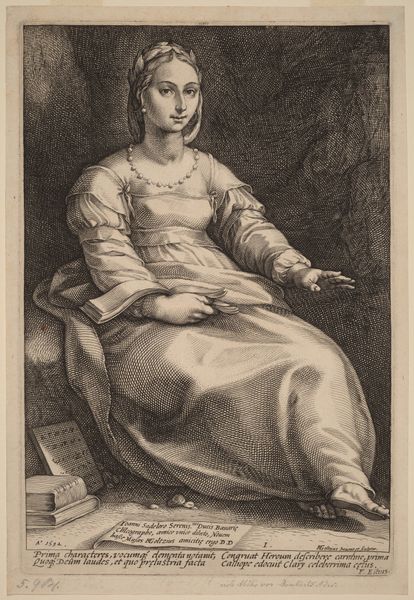
Portrait of Maria Gaet - Agnesi 1775 - 1827
0:00
0:00
drawing, print, ink
#
portrait
#
drawing
#
neoclacissism
# print
#
caricature
#
ink
#
academic-art
Dimensions: 6 3/4 x 4 3/4in. (17.1 x 12cm)
Copyright: Public Domain
Curator: This ink and wash drawing, held at The Met, is a portrait of Maria Gaetana Agnesi by Jean-Baptiste-Francois Bosio, dating roughly from 1775 to 1827. Agnesi was, of course, an Italian mathematician and philosopher. Editor: It's captivating! The somber tones create a deeply reflective mood. She appears engrossed in thought, doesn't she? The globe nearby seems significant too. Curator: Absolutely. The image deliberately positions Agnesi as an intellectual figure. Her engagement with scientific thought is heavily emphasized by situating her in relation to the scientific and scholarly objects and by framing her with architectural elements evoking classical wisdom and thought, elevating both her status and intellect. Editor: Globes have always carried immense weight. They symbolize not just geographical knowledge, but exploration, discovery, and a grasp of the world. Its placement near her suggests that her mind also roams the globe. Curator: Indeed, placing learned figures such as Agnesi in proximity to intellectual and classical elements in portraiture was strategic. It lent them legitimacy and reinforced the societal importance of education, especially for women during the 18th century. This drawing humanizes her, but also subtly makes the claim that female learning is possible. Editor: Her pensive gesture—finger to her face—adds another layer. It’s a classic pose signifying contemplation and creativity, inviting us to ponder what's going on in that brilliant mind of hers. Is that a slight smirk I see there, too? Curator: The somewhat severe, austere neoclassical style prevalent at the time demanded clarity and rationality but that, happily, didn't necessarily stifle nuanced character portrayal entirely. Also, note the delicate, but self-possessed balance within the drawing as a whole between the intellectual world indoors, represented by the table and globe, and a much larger physical and social world out of doors, depicted only in fragments outside the colonnade. It provides the viewer with clues about Agnesi's own position within Italian society, even as an acknowledged intellectual. Editor: The choice of ink and wash is interesting. It allows for gradations of light and shadow which creates depth. Thinking about it, the choice makes the intellectual space here tangible, and that has an intriguing effect. It certainly resonates with a portrait meant to encapsulate intellect and knowledge. Curator: Exactly! I always find it fascinating how artistic choices often subtly enforce or reveal complex messages about not just individual sitters like Agnesi, but wider trends in contemporary society and politics. Editor: It certainly gives a new appreciation for Maria Agnesi and her contribution to history. Curator: And a renewed awareness for how that contribution has been, in every sense of the term, framed for us!
Comments
No comments
Be the first to comment and join the conversation on the ultimate creative platform.
